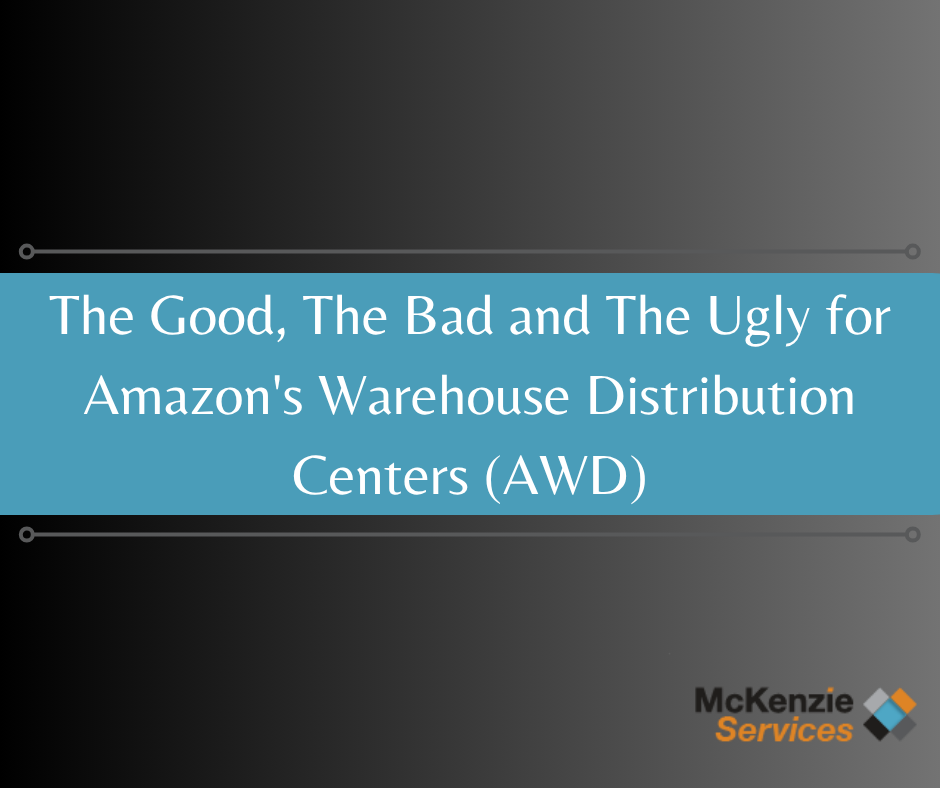Amazon Warehouse Distribution (AWD): The Good, The Bad, and… The Really Ugly 😬
By now, you’ve probably heard the buzz around Amazon Warehouse Distribution (AWD)—and if you’re like many of our clients, you’ve got questions. We’ve been listening to your feedback, digging into the details, and gathering real-world experiences from sellers just like you.
So, what is AWD exactly?
Think of AWD as Amazon’s long-term, low-cost storage solution. You send your inventory to one of their AWD centers (not the same as FBA!), and when your FBA stock starts to run low, Amazon auto-magically pulls inventory from AWD and ships it to an FBA warehouse for you. Easy enough… in theory.
Let’s break it down—the Good, the Bad, and the Ugly—so you can decide if AWD is right for your business.
✅ The Good News (Yes, there is some!)
-
Automatic FBA Replenishment: Once your FBA inventory starts to run low, Amazon will top it off using preset replenishment quantities. No need to lift a finger!
-
Cheaper Storage Fees: AWD storage costs less than storing inventory directly in FBA. Great if you’re trying to save on long-term storage expenses.
-
Inbound Placement Fees Covered: Amazon will cover the cost of splitting shipments across their network—though you still pay to get it to AWD. (You can still use Amazon’s Preferred Partner Program to help with that.)
⚠️ The Bad News (Here’s where it gets tricky…)
-
You Pay for Shipping In: Amazon might cover placement fees, but you’re still footing the bill to get your inventory into AWD. Preferred Partner carriers are still an option, though.
-
LTL Required for Most Locations: Only 2 AWD centers accept small parcel shipments (as of Jan 2, 2025). If your assigned center isn’t one of those, you’re stuck with LTL shipping, even for small shipments. That means higher costs and slower delivery times—LTL can take 1–3 weeks longer than small parcel.
-
Slow Check-Ins: Sellers on Amazon forums are reporting multi-month delays (yes, MONTHS) getting their AWD shipments checked in. Some are still waiting 3 months later. Yikes.
-
Strict Packing Rules: AWD doesn’t allow mixed-SKU boxes. Each box must contain only one SKU. If your products aren’t already case-packed by SKU, this could mean a major repackaging headache.
-
Product Restrictions: AWD doesn’t allow:
-
Items with expiration dates
-
Hazmat items
-
Shoes, watches, jewelry, or anything considered high-value
-
Grocery products
-
😬 The Ugly Truth (Brace yourself…)
-
Lost Inventory: Sellers are reporting lost units at AWD centers. Yes—just flat-out missing.
-
Painfully Slow Replenishment: Some sellers are watching their FBA listings go out of stock… while hundreds of units sit untouched at AWD. Replenishment delays from AWD to FBA are a real problem, and it’s causing lost sales, lower rankings, and serious frustration.


Source: Amazon Forum
So… Should You Use AWD?
If you’re shipping in bulk, have streamlined SKUs, and you’re not in a rush, AWD might work well for you. But for smaller sellers, or anyone who needs quick turnaround, flexibility, or stores restricted items—proceed with caution.
Need help deciding if AWD is a good fit for your business? Or want a backup plan with a reliable 3PL (hi 👋) that won’t lose your inventory or leave you out of stock for weeks?
Contact McKenzie Services today and let’s talk strategy.



Comments are closed